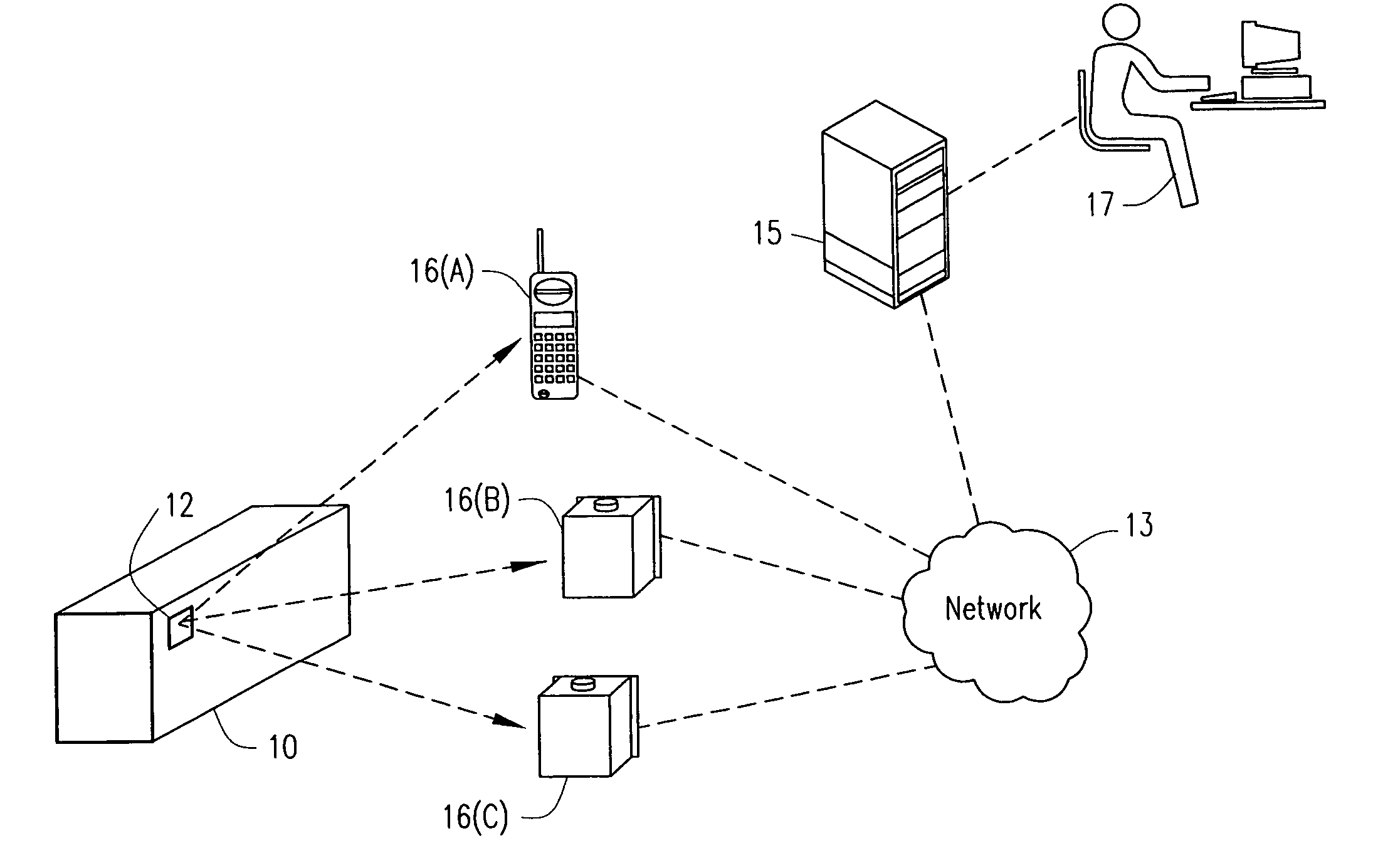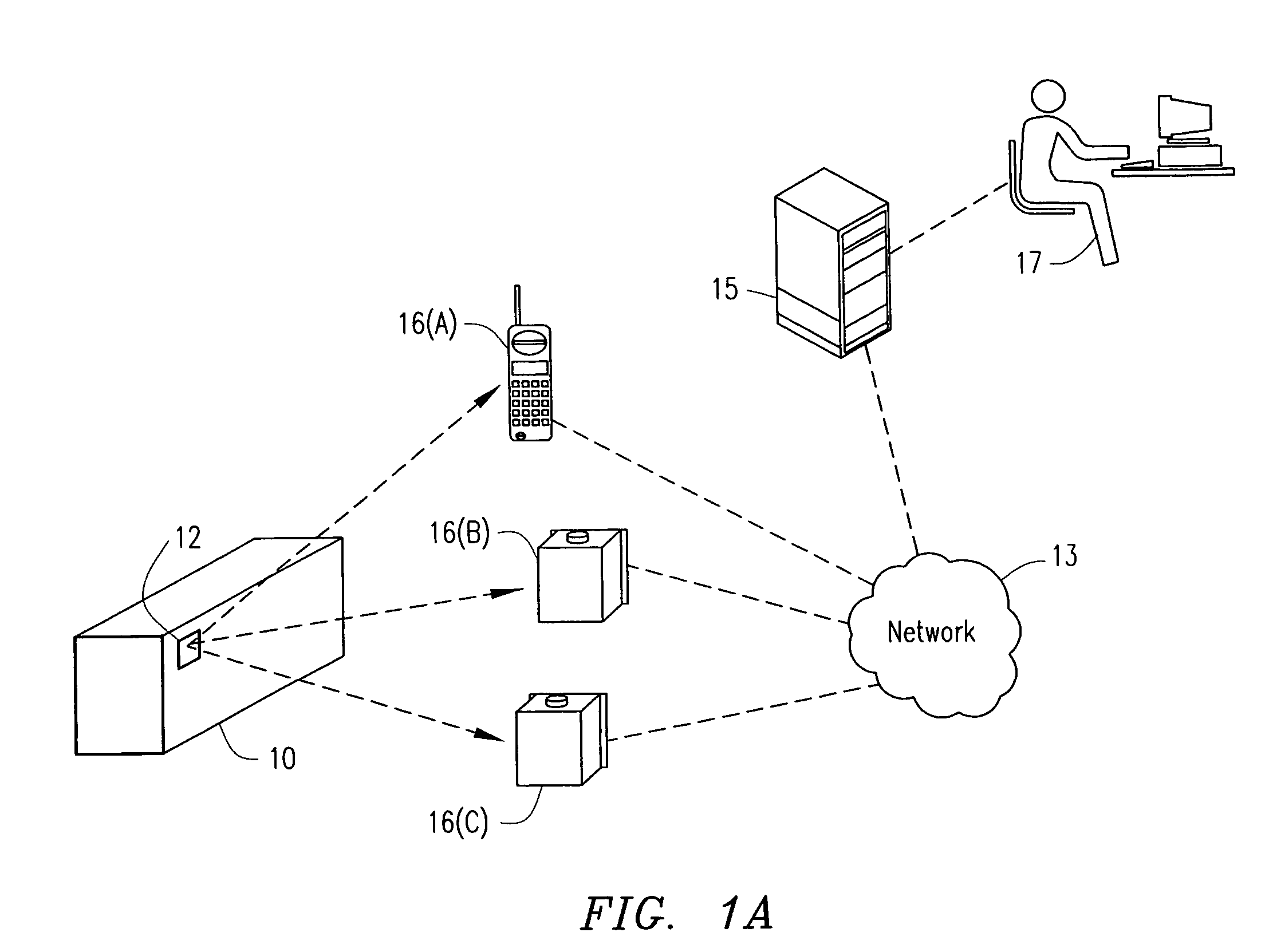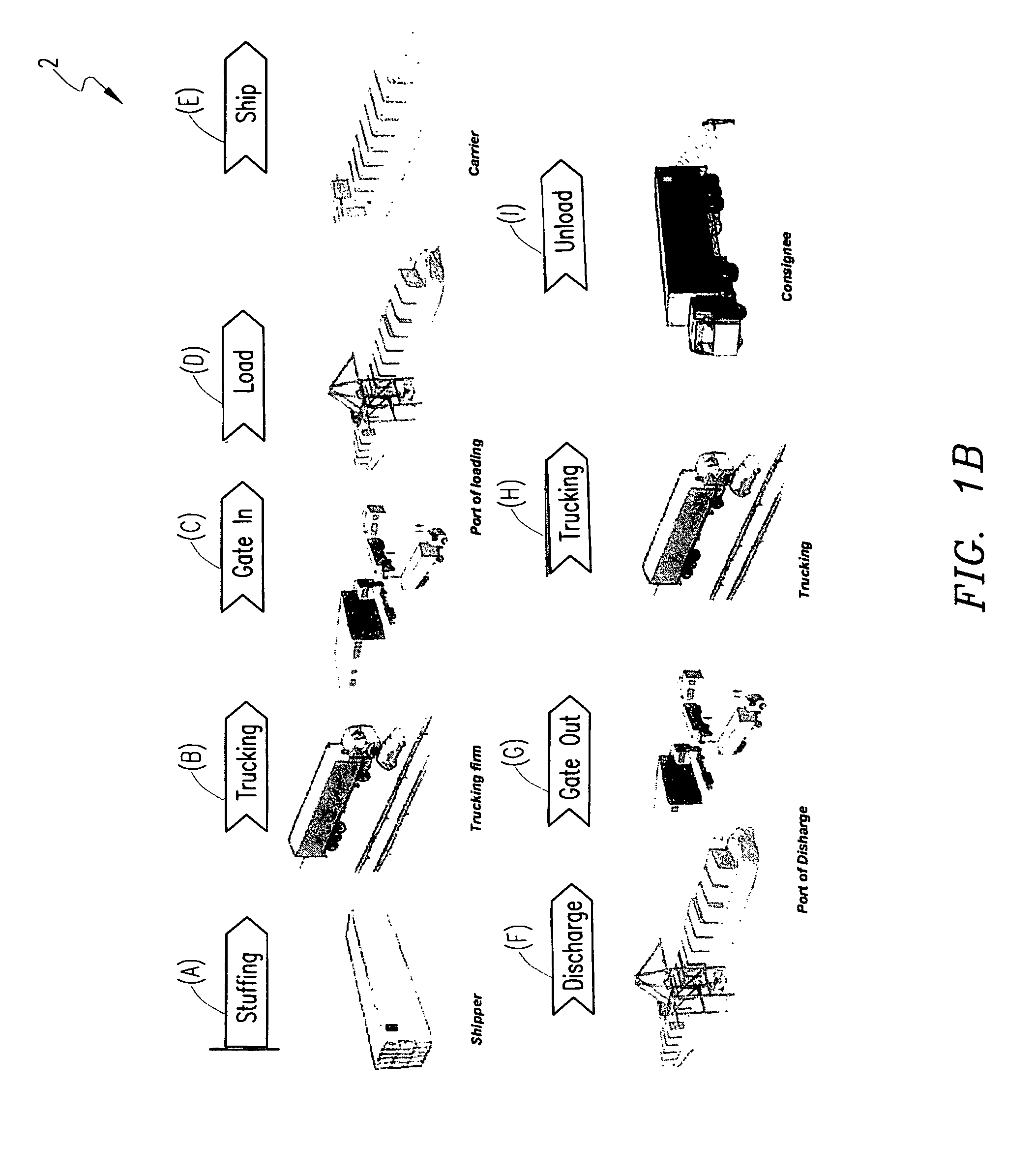Method and system for monitoring containers to maintain the security thereof
a container and security technology, applied in the field of methods and systems for monitoring the security of containers, can solve the problems of high risk of introduction of terrorist biological, radiological or explosive devices via freight containers, and inability to physically inspect, and achieve the effects of reducing the risk of terrorist attacks, high risk, and high risk of physical injury
- Summary
- Abstract
- Description
- Claims
- Application Information
AI Technical Summary
Benefits of technology
Problems solved by technology
Method used
Image
Examples
Embodiment Construction
[0055] It has been found that a container security device of the type set forth, shown, and described below, may be constructed in and secured to a container for effective monitoring of the integrity and condition thereof and its contents. As will be defined in more detail below, a device in accordance with principles of the present invention is constructed for positioning within a pre-defined portion of the container.
[0056]FIG. 1A is a diagram illustrating communication among components of a system in accordance with principles of the present invention. The system includes a device 12, at least one variety of reader 16, a server 15, and a software backbone 17. The device 12 ensures that an undetected breach of the container 10 has not occurred after the container 10 has been secured. The container 10 is secured and tracked by a reader 16. Each reader 16 may include hardware or software for communicating with the server 15 such as a modem for transmitting data over, for example, GS...
PUM
 Login to View More
Login to View More Abstract
Description
Claims
Application Information
 Login to View More
Login to View More - R&D
- Intellectual Property
- Life Sciences
- Materials
- Tech Scout
- Unparalleled Data Quality
- Higher Quality Content
- 60% Fewer Hallucinations
Browse by: Latest US Patents, China's latest patents, Technical Efficacy Thesaurus, Application Domain, Technology Topic, Popular Technical Reports.
© 2025 PatSnap. All rights reserved.Legal|Privacy policy|Modern Slavery Act Transparency Statement|Sitemap|About US| Contact US: help@patsnap.com



